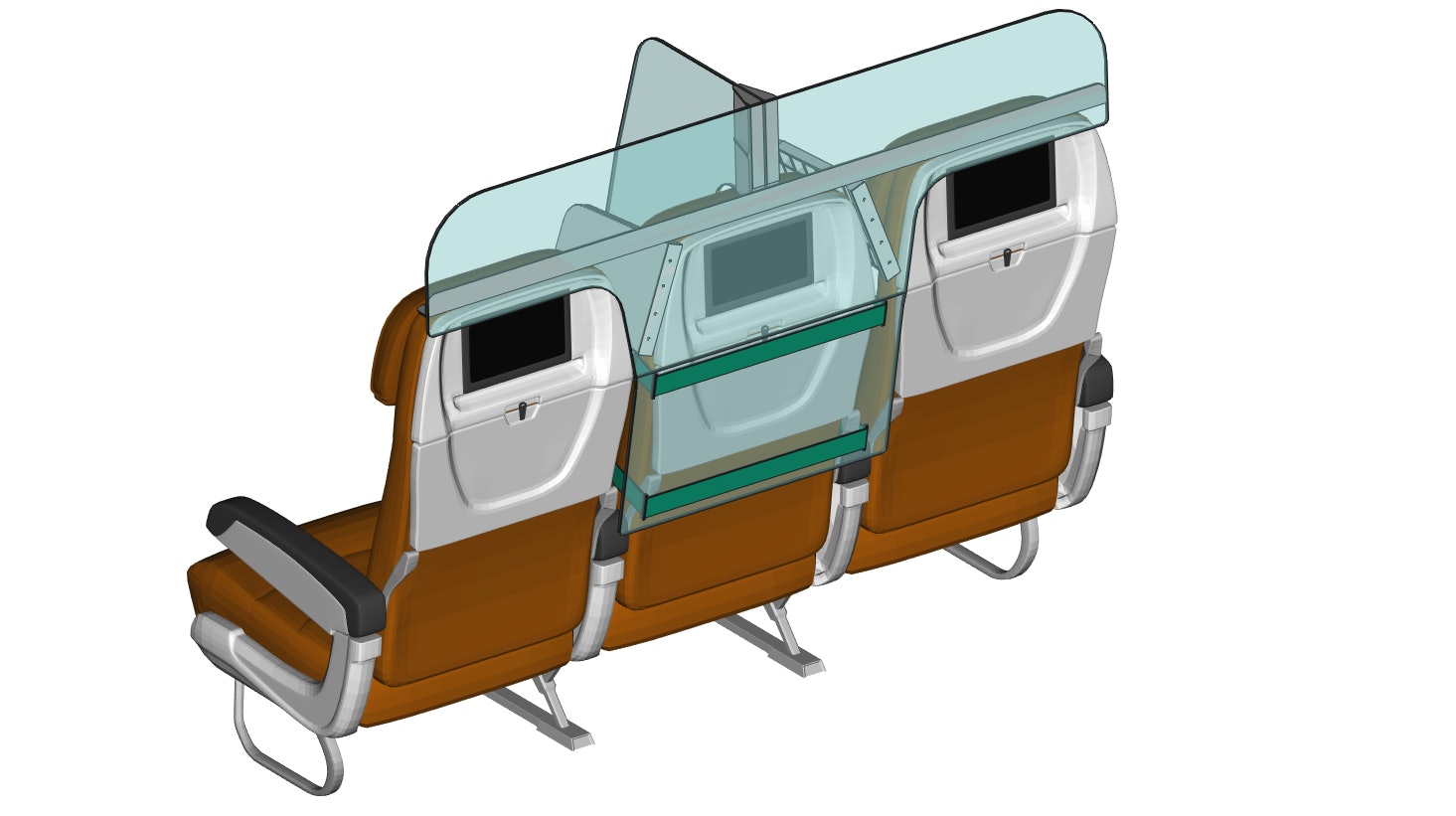Middle seat empty? This device could help with social distancing

May 8, 2020 • 3 min read

The PlanBay design creates a physical barrier between aisle and window seats and on top of each row © Florian Barjot/EarthBay
As the travel industry grapples with what the new normal might look like post-coronavirus, some airlines are changing up their seating arrangements to enforce social distancing, blocking off the middle seat in a bid to give passengers more room. One French aeronautics engineer is taking the concept a step further, with a design for a removable kit to create a physical barrier within a row of seats, adding an extra layer of protection in economy class.
Last year, Florian Barjot conceived a design to replace a plane’s cargo-hold door with rows of windows and transform the forward bay into a lux passenger cabin; now, he’s turned his attention to air travel during – and after – the pandemic. Dubbed PlanBay, his proposed kit would use plexiglass or polycarbonate sheets to divide each middle seat, increase the height inches of the seatback, and fill in the gaps between the seats themselves, providing a bit of breathing room during epidemic flare-ups and in the recovery phase.
“I remember my wife saying, ‘I don’t want to have someone sneeze behind me!’” Barjot tells Lonely Planet. And while his design wouldn’t create an impenetrable bubble, it would reduce the odds of unintentional contact with a stranger. “The pitch for rows is between 30-35 inches only, even less with the seatback reclined,” he says, but “there is still a difference between two or three feet distance and touching an unknown passenger sharing the same armrest.”

To keep seatmates from rubbing elbows, the kit would be installed in two separate blocks that join above the headrest – and a seat could be equipped in just a few minutes by maintenance personnel as the need arises, Barjot says, no modifications required. To remain consistent with social-distancing guidelines, the seats wouldn’t recline, though a lateral headrest could be added on for long-range flights.

Now that the design has been unveiled, the next step is to partner with an early adopter airline and find aircraft-interiors suppliers to produce a prototype. “The idea is to adapt to local suppliers or MRO capabilities, with the materials they have on-shelf or easily procurable, so it reduces the lead time in production and logistics,” Barjot says.
He stresses that PlanBay wouldn’t be a permanent fix, in part because keeping the middle seat free indefinitely isn’t a sustainable solution. “The idea of a removable kit makes sense when the need for sanitary measures is temporary and/or limited to a geographic area,” he says. “It may be counterintuitive, but the kit aspect matches the airline vision that planes two-thirds full are not viable for the long term.” The intention, he says, is to install it for a limited time, not to create a new travel standard.
For more information, visit earth-bay.com.
Keep up to date with Lonely Planet's latest travel-related COVID-19 news here.




